Hazards And Vulnerability
Understanding the potential hazards and determining the Pueblo of Sandia’s vulnerability to these hazards provides the basis all emergency planning. Some of the hazards posing the greatest threat to the Pueblo of Sandia include flooding, wildfires and hazardous materials incidents. Click on the links below for fact sheets, videos and Websites with information about the hazards common to our area.
Flooding
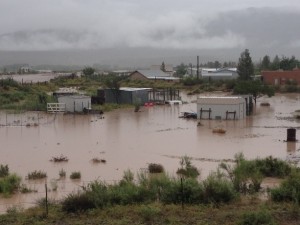 Floods are one of the most common hazards, but not all flooding is alike. Flash floods may develop very quickly from excessive rain or a dam break and affect a localized area, while overland flooding may develop slowly and affect entire river basins and multiple states. The following resources will help you prepare for, respond to and recover from a flood.
Floods are one of the most common hazards, but not all flooding is alike. Flash floods may develop very quickly from excessive rain or a dam break and affect a localized area, while overland flooding may develop slowly and affect entire river basins and multiple states. The following resources will help you prepare for, respond to and recover from a flood.- How to Prepare for a Flood
- The Federal Emergency Management Agency gives tips on how to prepare before, during and after a flood.
- The National Weather Service provides information about flood safety, hazards, watches and warnings.
- The American Red Cross helps to answer three questions: What should I do? What supplies do I need? What do I do after a flood?
- The Food and Drug Administration provides information regarding what consumers need to know about food and water safety during and after a flood.
- The Environmental Protection Agency provides tips on recovering from a flood, including advice on how to use a generator safely and issues such as mold and wastewater.
Wildfires
 According to the National Interagency Fire Center, between 2000 and 2012, wildfires burned an average of 7 million acres and cost an average of $1.5 billion each year. The following resources can help you prepare for and recover from a wildfire.
According to the National Interagency Fire Center, between 2000 and 2012, wildfires burned an average of 7 million acres and cost an average of $1.5 billion each year. The following resources can help you prepare for and recover from a wildfire.- Are You Prepared for Wildfires?
- FEMA provides information on how to prepare for a wildfire.
- FEMA provides steps for protecting your home from wildfire in “Are you Prepared for a Wildfire?”
- The CDC provides information in “Protect Yourself from Wildfire Smoke” – Information about minimizing your exposure to wildfire smoke.
- The American Red Cross provides information about what to do before, during and after a wildfire.
Hazardous Materials
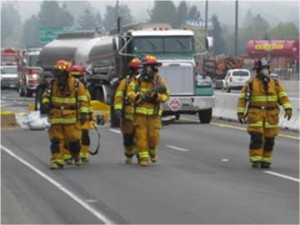 Hazardous materials or chemical threats may come from industrial site incidents, transportation accidents, terrorist attacks and even common household products. The following resources can help you prepare for and recover from a chemical threat.
Hazardous materials or chemical threats may come from industrial site incidents, transportation accidents, terrorist attacks and even common household products. The following resources can help you prepare for and recover from a chemical threat.- To report oil and chemical spills and radiation emergencies, call the National Response Center toll-free at 1-800-424-8802 or use the online reporting tool.
- To report poison related emergencies, call the American Association of Poison Control Centers toll-free at 1-800-222-1222.
- Chemical Threat Information– Information from the National Academies and the U.S. Department of Homeland Security about possible signs of a chemical attack and what to do before, during and afterward.
- Household Chemical Emergencies– Advice from FEMA on what to do before, during and after a household chemical emergency.
- Chemical Emergencies– Information from the American Red Cross on what to do before, during and after a chemical emergency.
- Understanding Chemical Emergencies – Fact sheets on chemical agents as well as details on sheltering in place, evacuation and decontamination. (Centers for Disease Control and Prevention)
Winter Weather
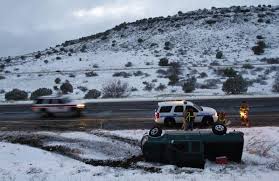
Exposure to cold temperatures can cause serious or life-threatening health problems and winter weather can create hazardous driving conditions. The following resources can help you prepare for and recover from severe winter weather.
- How to Prepare for a Winter Storm
- Winter Storms and Extreme Cold– Advice from FEMA on what to do during a winter storm when you lose your heat.
- Winter Weather Safety and Awareness– Information from the National Weather Service about winter weather forecasts, winter storm preparedness and National Oceanic and Atmospheric Administration (NOAA) weather radio.
- Winter Tips – Advice about keeping safe and saving energy in winter conditions from the Environmental Protection Agency.
- Winter Storm Preparedness– Information from the American Red Cross about what to do before and during a winter storm.
Severe Heat
 According to a 2013 Centers for Disease Control and Prevention (CDC) study, in the U.S. an average of 658 people per year died of heat related injuries between 1999 and 2009. The following resources can help you prepare for and recover from an extreme heat incident.
According to a 2013 Centers for Disease Control and Prevention (CDC) study, in the U.S. an average of 658 people per year died of heat related injuries between 1999 and 2009. The following resources can help you prepare for and recover from an extreme heat incident.- Prepare for Extreme Heat– Advice from FEMA on what you should do if the weather is extremely hot.
- Stay Healthy During Extreme Heat – Tips from the Environmental Protection Agency including checking air quality and limiting outside exposure.
- Extreme Heat- Self-help measures and tips for dealing with periods of extreme heat from the Centers for Disease Control.
- Heat Wave: A Major Summer Killer– Information from the National Weather Service about the heat index and ways to protect yourself from extreme heat.
- Heat Wave Safety– Fact sheet on what to do before, during and after a heat wave from the American Red Cross.
Drought
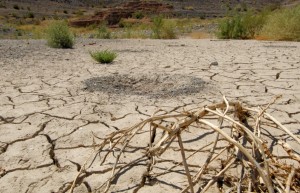 Droughts are one of the most costly natural disasters affecting the U.S. The following resources can help you prepare for and recover from a drought.
Droughts are one of the most costly natural disasters affecting the U.S. The following resources can help you prepare for and recover from a drought.- U.S. Drought Portal – Fact sheets, local news and maps to help you monitor the drought in your area from the National Oceanic and Atmospheric Administration.
- National Drought Mitigation Center– The University of Nebraska-Lincoln provides current news and tips on how to plan for a drought.
- Drought Preparedness and Water Conservation– The American Red Cross provides information on how to conserve water indoors and outdoors.
- Water Conservation Tips– Information on how to save water in the bathroom, kitchen, laundry and outside the home from the Washington Suburban Sanitary Commission.
Tornadoes
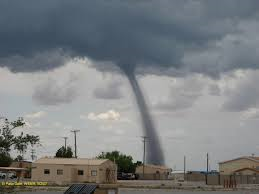 Tornadoes come in all shapes and sizes and can occur anywhere in the U.S. at any time of the year. In the southern states, peak tornado season is March through May, while peak months in the northern states are June and July. The following resources can help you prepare for and recover from a tornado.
Tornadoes come in all shapes and sizes and can occur anywhere in the U.S. at any time of the year. In the southern states, peak tornado season is March through May, while peak months in the northern states are June and July. The following resources can help you prepare for and recover from a tornado.- How to Prepare for a Tornado
- Prepare for a Tornado– Advice about keeping drinking water and food safe for consumption from the Environmental Protection Agency.
- What to Do During a Tornado – Information from FEMA on what to do during a tornado and ways to seek shelter.
- Tornado Safety– Advice from the American Red Cross on what to do before, during and after a tornado.
- Safety After a Tornado– Information from the Centers for Disease Control on safety issues after a tornado, including how to handle flooding or debris.
Earthquakes
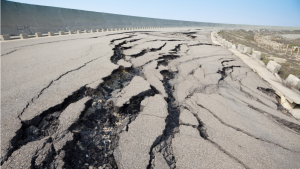 Did you know that 45 states including New Mexico are at a moderate to high risk for earthquakes? Earthquakes can range from mild to devastating and since earthquakes strike with no warning, it is critical that everyone be ready at all times. The following resources can help you prepare for, respond to and recover from an earthquake.
Did you know that 45 states including New Mexico are at a moderate to high risk for earthquakes? Earthquakes can range from mild to devastating and since earthquakes strike with no warning, it is critical that everyone be ready at all times. The following resources can help you prepare for, respond to and recover from an earthquake.- How to Prepare for an Earthquake
- Earthquakes – Information from FEMA on earthquake planning and what to do before, during and after an earthquake.
- Earthquake Preparedness – Advice from the American Red Cross on what to do before, during and after an earthquake.
- Surviving an Earthquake – Information from the Centers for Disease Control and Prevention regarding what you need to know to deal with safety issues after an earthquake.
Climate Change
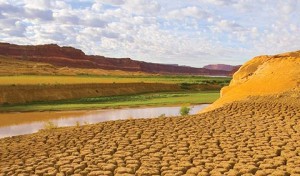 Climate changes pose great challenges to the Southwest, which is the hottest and driest region in the United States where the availability of water has defined its landscapes, history of human settlement, and modern economy. Increased heat and changes to rain and snowpack will send ripple effects throughout the region. Severe and sustained drought will stress water sources, already over-utilized in many areas, forcing increasing competition among farmers, energy producers, urban dwellers, and plant and animal life for the region’s most precious resource.
Climate changes pose great challenges to the Southwest, which is the hottest and driest region in the United States where the availability of water has defined its landscapes, history of human settlement, and modern economy. Increased heat and changes to rain and snowpack will send ripple effects throughout the region. Severe and sustained drought will stress water sources, already over-utilized in many areas, forcing increasing competition among farmers, energy producers, urban dwellers, and plant and animal life for the region’s most precious resource.- Global Climate Change Research Program.
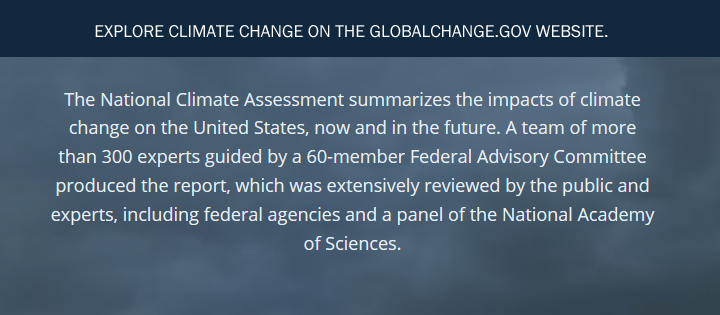
Graphic Provided by globalchange.gov